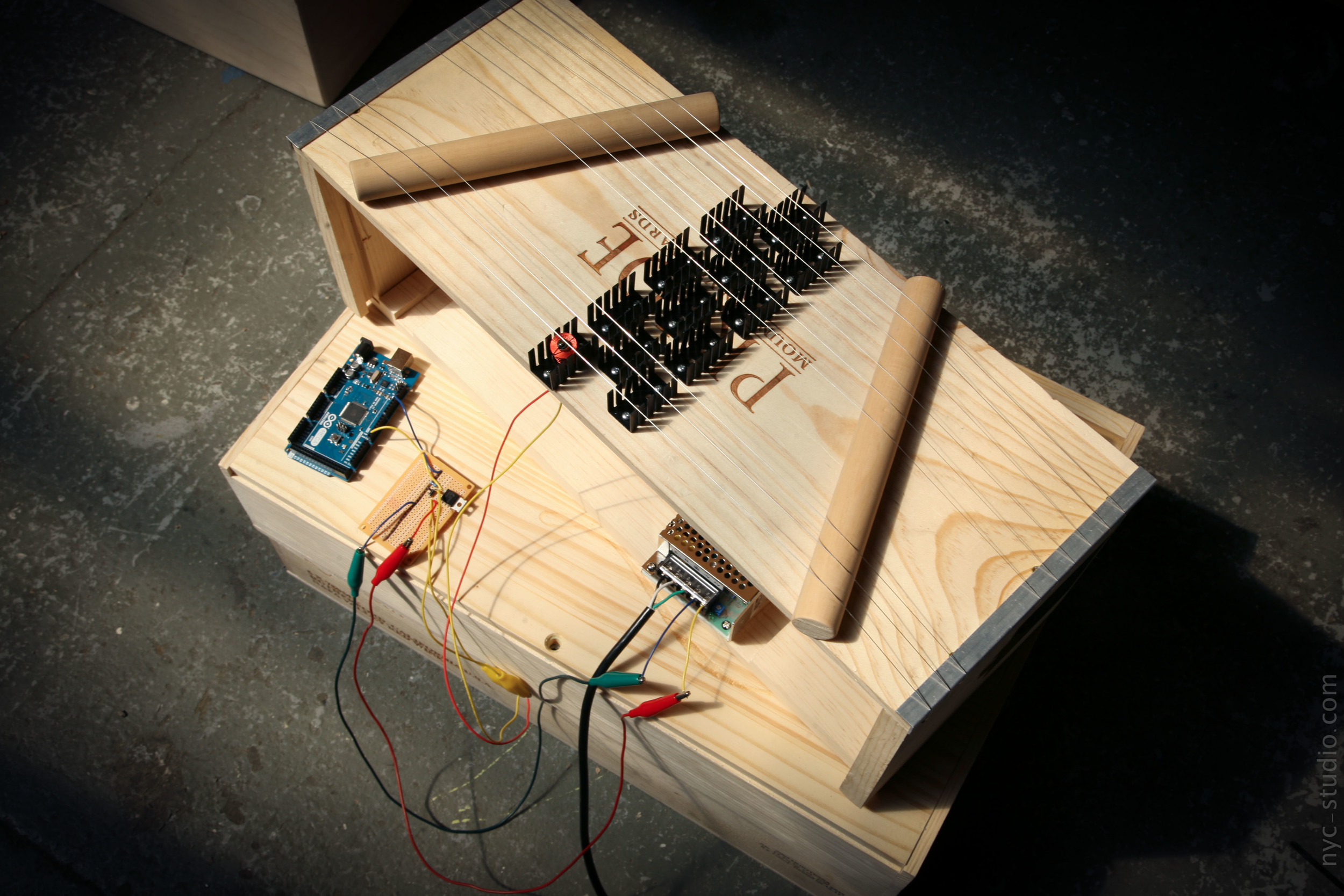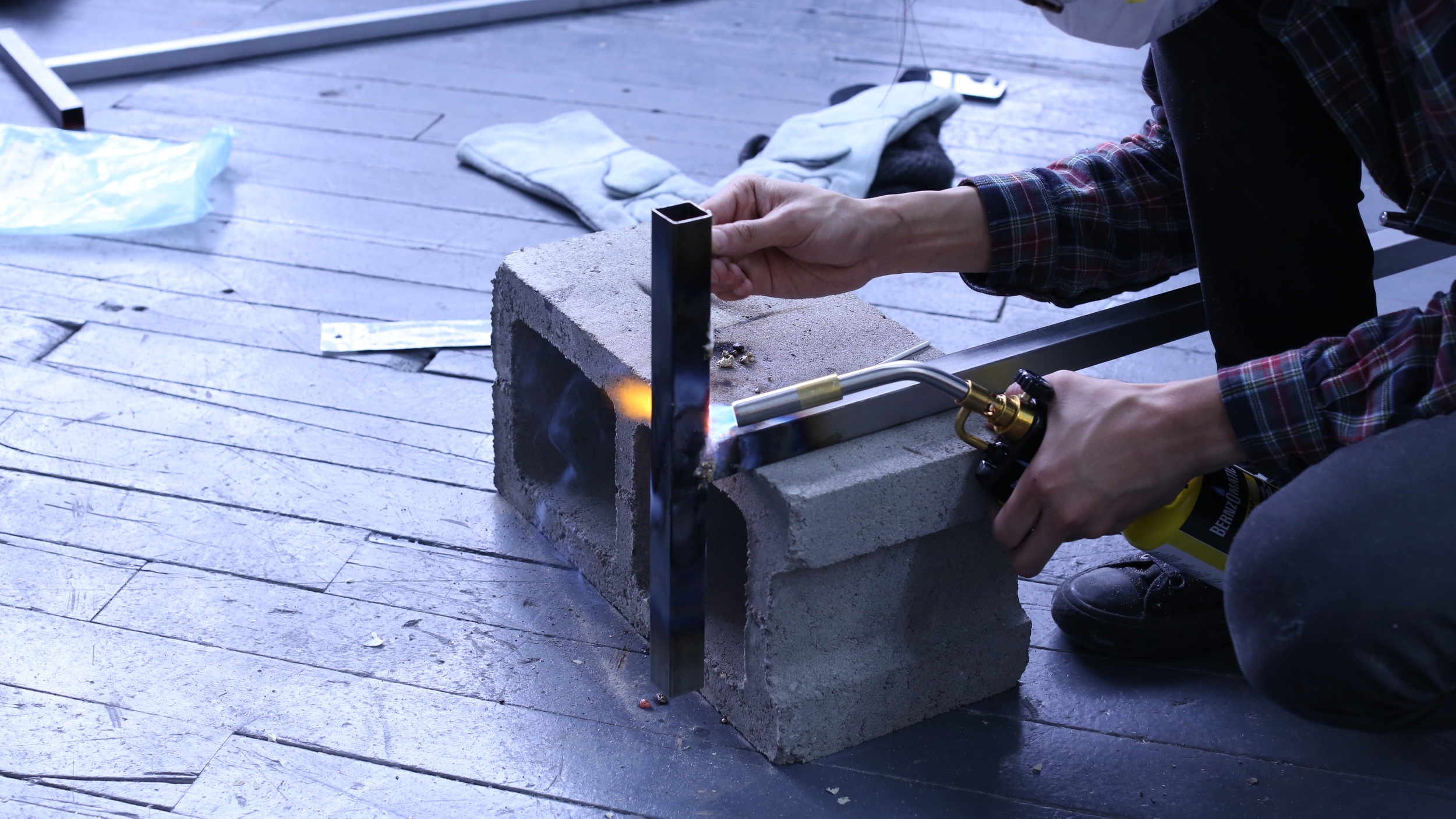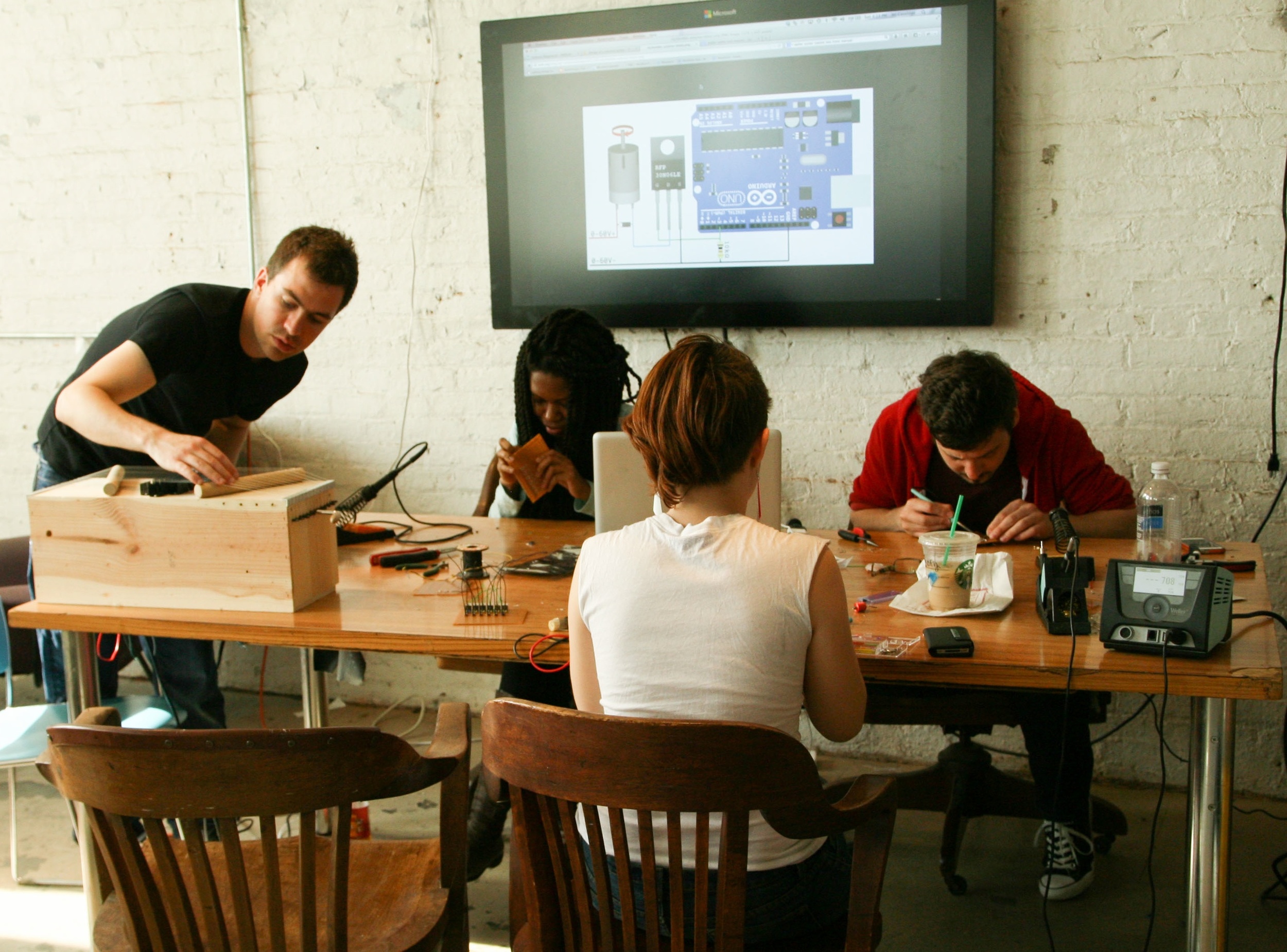Sounding Box #11
What is it?
Sounding Box #11 is an interactive sound sculpture. As viewers approach and cast shadows on the installation, strings on the sculpture vibrate, generating acoustic sound. Participants can improvise and interact, controlling the sound through motion.
Why did we make it?
The purpose of the sculpture is to create harmonious sounds that complement the surrounding environment, and to allow each participant to create their own unique sonic experience.
How does it work?
The piece generates ambient sound acoustically, similarly to traditional classical stringed instruments such as the guitar, violin, or cello.
Electromagnets generate varying magnetic fields that push and pull the strings to induce standing waves. As the magnets vibrate the strings, vibrations travel down into the wooden chamber, generating acoustic sound.
Light sensors from littleBits Electronics perceive changes in shadow from the viewers. As the shadows change and the sensors react, littleBits' Arduino processors control custom circuitry inside the sculpture, which start and stop the electromagnets.
Our Design Process
This project originally stemmed out of our founder's collection of personal sound sculptures. littleBits Electronics approached us to team up, and we knew there must be a way to utilize their open-source platform in a music-making design that *anyone* could play with.
After brainstorming with their library, we settled on light sensors, and integrated those into one of MJ's pre-existing sound sculptures for a totally new design.
Along the way we developed custom circuitry, firmware, 3D modeled components, and fabricated the acoustic structure along with a metal panel and pedestal. Here are some photos of our work in progress:
Contributing designers
Wood + Metal Fabrication: Bruce Johann
Metal Assembly: Lui Kawasumi
Electronics Assembly: Nathan Wheeler, Sofy Yuditskaya
3D Modelling: Lily Su
Supporting R&D: Andrew Hlynsky
Photography: Matthew Bergman, Ksenia Zabotina, and littleBits Electronics LLC










